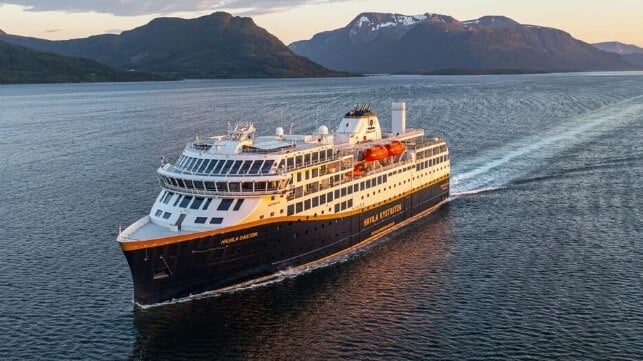Havila Voyages Plans First Climate-Neutral Norwegian Coastal Round Trip

Havila Voyages, which already operates four Norwegian coastal cruise ships fueled with LNG and equipped with batteries, reports it is preparing to take the next step: a climate-neutral round trip along the Norwegian coast. The trip will cover more than 5,000 nautical miles, and the company believes it can be part of an example of Norway’s leadership in transitioning the shipping industry.
“Right now, we are in the planning phase to test a full round voyage on the coastal route this fall, using biogas in combination with our large battery packs,” said Bent Martini, CEO of Havila Voyages. “We are in dialogue with suppliers to secure sufficient volumes to be able to fill the tanks 100 percent with biogas, and we believe we will succeed.”
Martini revealed that Havila Voyages is exploring the possibility of the sailing on its coastal route from Bergen to Kirkenes and back to Bergen. He said they hope to accomplish it as early as this fall.
“That would mean that one of our ships, already this fall, could prove that it is possible to sail over 5,000 nautical miles, the entire Coastal Route, climate neutrally.”
Havila built four 15,800 gross ton cruise ships using energy-efficient hull designs created to handle the varied conditions along the Norwegian coast. The ships, which can carry up to 650 passengers, including 179 between ports and 468 in cabins, are LNG fueled and equipped with a battery pack of 6.1 megawatt-hours (MWh). The company in June 2022 demonstrated the capabilities of the 86-ton battery pack, which it says allows them to operate emission-free for up to four hours. The Havila Castor sailed using just the batteries, cruising the historic Geirangerfjord.
“If Norwegian authorities are serious about their environmental ambitions, the ships on the coastal route can be a beacon for the green transition in shipping and create synergies for other parts of the industry,” says Martini. “The problem for the maritime industry, when politicians waver in their decisions as we saw in the world heritage fjords, is that no one dares to invest in the green shift.”
Martini points out that stricter environmental requirements are fully achievable with today’s technology, and he hopes politicians will stand by the standards they set.
“Our message to politicians and decision-makers is clear: climate neutrality should be an absolute minimum in the next contract. And we will deliver on that from day one.”
Havila made history in 2018 when Norway, for the first time, split the contract for the coastal operations. It received a nine-year agreement from 2021 to 2030 alongside long-term provider Hurtigruten.
Hurtigruten has also made investments in the future, adding batteries and increasing efficiency for several of its vessels. The company has revealed a design study it is pursuing to create the first of a new generation of zero-emission cruise ships.
Starting on January 1, 2026, Norway begins a six-year phase-in of its zero-emission regulations for coastal shipping. It starts with smaller ships under 10,000 gross tons, and has already spurred programs for zero-emission battery and hydrogen ferries. By 2032, all Norwegian shipping will have to operate with zero emissions in the historic fjords and on coastal routes.
